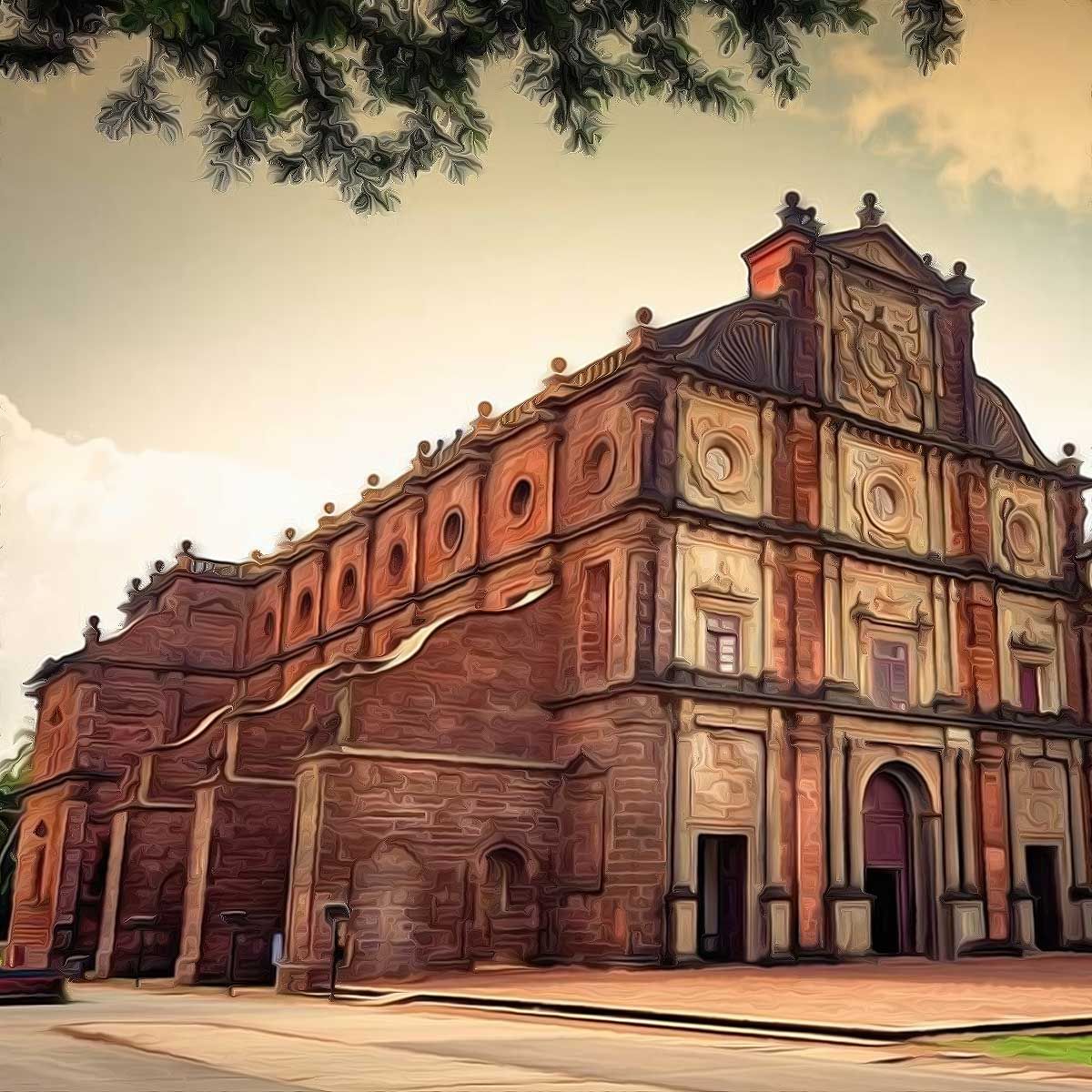More Coverage
Twitter Coverage
JOIN SATYAAGRAH SOCIAL MEDIA
"In law, not all authorities are 'public'": In a twist that could inspire satirists everywhere, the Bombay High Court clarifies that the Archbishop of Goa isn't under RTI, apparently, divine decrees are no match for bureaucratic ones in the court of law!

In a decision that feels ripped straight from the pages of a gripping courtroom drama, the Goa bench of the Bombay High Court has declared something that might raise more than a few eyebrows. They've pronounced that the Archbishop of Goa, Daman, and Diu stands uniquely exempt from the reaches of the Right to Information Act (RTI Act). Yes, contrary to the anticipated trajectory of the case, the court declared this significant religious figure doesn’t qualify as a 'public authority'. For proponents of transparency, this indeed serves as a cliffhanger.
|
To provide some context, back in 2014, the Goa State Information Commission (GSIC) had made a rather assertive declaration. They believed that the Archbishop, when he acts as the Patriarchal Tribunal of the Archdiocese of Goa and Daman, essentially functions as a “public authority”, as described by Section 2(h) of the RTI Act. Their reasoning leaned on the premise that an individual of such significant religious stature, with the influence he wields over a large section of the population, should undoubtedly be subjected to public scrutiny and accountability.
But the plot thickened as Justice Mahesh Sonak of the Bombay High Court introduced a counter-narrative. Sonak probed deeper into the earlier GSIC decision, questioning its very foundation. Was the GSIC’s standpoint genuinely watertight? According to him, they might have missed an essential nuance in their evaluation.
To be precise, he underlined the following: "The GSIC should have examined whether the petitioner, when acting in his capacity as a Patriarchal Tribunal, could be held to be an authority or body established or constituted by a law made by the Parliament or the State Legislature. The GSIC posed this question but the same was never answered, or in any case, never adequately answered," the Court said.
This oversight, as highlighted by Justice Sonak, was a game-changer. He considered the GSIC’s initial conclusion as something that was lacking rigorous examination, possibly even an unintentional oversight.
So, where do these revelations place us? Certainly amidst a whirlwind of legal intricacies, but also facing larger questions. Questions about transparency, the role of influential figures in society, and the standards of accountability they should uphold. With this decision, the next chapter remains uncertain, and one can only wonder if another dramatic twist awaits.
|
In an ever-twisting saga, the court's narrative continued to peel layers off the GSIC's initial reasoning, revealing complexities that many hadn’t anticipated. This chapter takes us to a historical decree, but also challenges our understanding of how the ancient ties to the present.
The GSIC, in its prior determination, had leaned on a somewhat unexpected piece of evidence: Decree No.35461. Originating from the Government of Portugal, this decree was seen by the GSIC as a touchstone which continued to provide the Patriarchal Bishop his authority, even after being carried forth by the Government of Goa. However, the Bombay High Court wasn’t convinced, and with a hint of sarcasm, it mentioned that this reasoning was "neither here nor there."
Let's take a moment to absorb that. A decree from the Government of Portugal, a remnant from a colonial past, was suddenly at the center of this enigma. But the court wasn't buying it. The key question remained tantalizingly unanswered: Can the Archbishop, particularly when presiding as a Patriarchal Tribunal (for those not versed in ecclesiastical terms, these are church courts that deal with sensitive matters like marriages and divorces), truly be considered an entity borne out of a legislative act by the Indian parliament or a state legislature?
Adding another layer to this plot was a petition. The Goa Archbishop, perhaps feeling the weight of public scrutiny, contested the GSIC's call to unveil specific documents. These weren't just any papers. They were appointment letters of the Archbishops of two major cities - Goa and Bombay. They were accreditation letters that bore the mark of none other than the Vatican. And they were registers chronicling annulments of marriages. The rationale? Antonia Abel, the RTI applicant, argued that the Portuguese Civil Code (PCC), which still held sway in Goa, meant that decisions by the Patriarchal Tribunal enjoyed civil acknowledgment.
Yet, the Court, displaying its meticulous approach, found that the Patriarchal Tribunal didn’t owe its existence to Decree No.35461 (Law of Canonical Marriage) or even the Goa, Daman, and Diu (Administration) Act of 1962.
It's like watching a chess match where each move unravels more of the story, beckoning the question: What will the next move reveal?
As the curtain was drawn on this legal drama, the spotlight was on the intricacies of decrees, ecclesiastical courts, and the modern-day judiciary. With the weight of history on its shoulders, the court dove deep into the tapestry of legalities and emerged with conclusions that would redefine the interpretation of the RTI Act in religious contexts.
The Decree No.35461, a piece of legislation with historical implications, had its moment in the limelight. Article 19 of this decree did give nods of acknowledgment to annulment orders handed out by Ecclesiastical Courts, particularly the Patriarchal Tribunal. However, the court vehemently asserted, and rightfully so, that recognition is vastly different from establishment or constitution. Recognition of an entity's actions doesn't necessarily denote its creation or sanction by the recognizing body.
Driving this point home, the single-judge eloquently remarked, "Recognition isn't equivalent to establishment." This formed the crux of the judgment. Now, the Canon Law, revered and recognized for its spiritual implications, was put under the judicial microscope. And the court's observation was unambiguous.
"Similarly, the Canon Law or the Canonical Law cannot be regarded as the law made by the Parliament of India or the law made by the State Legislature. Merely because some of the decisions and judgments of the Ecclesiastical Courts and Tribunals constituted under the Canon Law may have acquired limited recognition under the State Law or the Parliamentary Law, that by itself would not be sufficient to hold that such Ecclesiastical Courts or Tribunals like the Patriarchal Tribunal are authorities or bodies established or constituted by a law made by the Parliament or the State Legislature," the Court held.
With this crystal-clear stance, the court resonated its belief that the GSIC had previously missed the mark, which led to the subsequent overturning of the commission's order.
In this legal orchestra, Senior Advocate JE Coelho Pereira, with his associates B Fernandes and Sagar Rivankar, championed the Archbishop's cause. In the opposing corner, the RTI applicant found a formidable ally in Senior Advocate JP Mulgaonkar, aided by the sharp-witted advocate Deeksha Sharma.
This entire episode, filled with tension, drama, and revelations, was nothing short of a legal thriller. And as the dust settled, the lines between recognition and establishment became clearer than ever.
 Support Us
Support Us
Satyagraha was born from the heart of our land, with an undying aim to unveil the true essence of Bharat. It seeks to illuminate the hidden tales of our valiant freedom fighters and the rich chronicles that haven't yet sung their complete melody in the mainstream.
While platforms like NDTV and 'The Wire' effortlessly garner funds under the banner of safeguarding democracy, we at Satyagraha walk a different path. Our strength and resonance come from you. In this journey to weave a stronger Bharat, every little contribution amplifies our voice. Let's come together, contribute as you can, and champion the true spirit of our nation.
 |  |  |
| ICICI Bank of Satyaagrah | Razorpay Bank of Satyaagrah | PayPal Bank of Satyaagrah - For International Payments |
If all above doesn't work, then try the LINK below:
Please share the article on other platforms
DISCLAIMER: The author is solely responsible for the views expressed in this article. The author carries the responsibility for citing and/or licensing of images utilized within the text. The website also frequently uses non-commercial images for representational purposes only in line with the article. We are not responsible for the authenticity of such images. If some images have a copyright issue, we request the person/entity to contact us at This email address is being protected from spambots. You need JavaScript enabled to view it. and we will take the necessary actions to resolve the issue.
Related Articles
- The Madras High Court has recently directed a Hindu petitioner that ‘Hindus must show tolerance’: Petitioner objected use of loudspeakers in a newly constructed church near his house
- Tamil Nadu Police in the wee hours arrested Ganesh Babu from Pudukottai district who had given a complaint about religious conversion happening in his area
- ‘Justice for Lavanya’ takes a national spotlight, BJP insists CBI enquiry, bats for a law against forceful conversions in Tamil Nadu: Media conveniently ignored Lavanya suicide in the mainstream narratives
- Madras High Court on Monday transferred the Lavanya suicide case to the Central Bureau of Investigation after the victim’s parents filed a petition seeking a CBI probe
- Two Christian teachers from two different Govt-aided Christian schools were arrested in Tamil Nadu for sexually abusing minor children: Children as young as ten years old were preyed on by the Head Master, booked under POCSO
- Pastor Father Lawrence has been given a life sentence by a POCSO court in Mumbai for the horrific crime of sodomizing a 13-year-old
- "छलावा": Evangelists like CBN India in Bharat are leveraging the soft power of local culture, from Bhangra Christmas carols to Garhwali hymns, subtly repurposing Bharatiya traditions for large-scale Christian conversions, & reshaping religious identities
- Pastor encroached property of a Hindu family worth Rs.12 crore in Chennai, built church on it, refuses to move out: Hindu family protests on knees while petitioning CM’s special cell to help
- Illegal church built on the government lands by unlawful encroachment in Kolar demolished following the orders of the Karnataka High Court: Karnataka
- Supreme Court agreed to hear a case of an Evangelist and founder of Global Peace Initiative KA Paul - Centre had refused to renew FCRA registration of various NGOs who failed to justify their donations






















